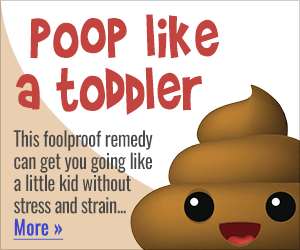Get Easy Health Digest™ in your inbox and don’t miss a thing when you subscribe today. Plus, get the free bonus report, Mother Nature’s Tips, Tricks and Remedies for Cholesterol, Blood Pressure & Blood Sugar as my way of saying welcome to the community!
Red flag dangers ignored for common hair loss drug

If there’s one thing you can say about Big Pharma, it’s that they never let side effects stand in the way of profit.
This includes pushing painkillers that lead to heart attacks and diabetes drugs linked to higher risk of heart disease.
And let’s not forget the acid reflux drugs that increase stroke risk by a whopping 94%.
Those are just a few examples, but it may shock you to know just how many red flags must be raised before the public learns of a threat…
A culmination of not one but multiple warnings that an extremely common drug prescribed to men could be responsible for driving anxiety and depression — and even causing suicide — sadly, took years.
Here are the details…
Eight studies and red flags were ignored
The drug we’re talking about is finasteride. And it’s been taken by millions of men since the 90s for both male pattern hair loss and benign prostatic hyperplasia (BPH), which is a non-cancerous enlargement of the prostate.
Unfortunately, according to researchers at the Hadassah-Hebrew University Medical Center in Israel, its effects on mood have been completely ignored by drug manufacturers and regulators despite the warnings from several studies.
In fact, they say that their research revealed eight studies published between 2017 and 2023 alone that flashed big red warning signals that were pushed under the rug.
Each of those studies demonstrated that people who take finasteride face a significantly higher risk of mood disorders and suicidal thoughts than those who don’t take it.
The problem goes even deeper
Even worse, researchers had voiced concerns about the effects of finasteride as far back as 2002.
And based on a trial related to the suicide of one finasteride user, some FDA experts had recommended slapping a warning label for “suicidal thoughts and behavior” on the drug in 2010.
Yet, according to study author Mayer Brezis, a retired nephrologist and medical professor at the Hadassah-Hebrew University Medical Center in Israel, “The advice was rejected by the agency without disclosing the internal discussion and the rationale for the final decision.”
Instead, the documents were hidden under a seal of confidentiality, which included estimates of the number of people that might be affected by these dangerous, even deadly, side effects.
But according to the Israeli study, the number of suicides across the world from use of the drug could number in the thousands.
The researchers call it “a systemic failure of pharmacovigilance,” beginning with the drug manufacturer’s failure to conduct safety research and ending with regulators’ failure to demand such research before approving its use.
Finasteride’s brain effects
The scientists say that the reason finasteride is so dangerous to mood is due to its brain effects.
The drug is used for hair loss because it interferes with the conversion of testosterone into dihydrotestosterone (DHT). Yet at the same time, it also inhibits the production of certain neurosteroids, such as allopregnanolone, that are used for mood regulation.
Additionally, animal studies have shown that finasteride use leads to long-term brain inflammation, as well as structural changes in the hippocampus, the brain region associated with learning, memory, and emotion.
Research has also shown that even after patients stop taking the finasteride, the psychiatric side effects they experience can continue for months or even years — a condition that’s been labeled “post-finasteride syndrome.”
Safer options for hair loss and BPH
It took decades, but the US Food and Drug Administration (FDA) listed depression as a potential side effect of finasteride in 2011, and added suicidality in 2022.
Clearly, finasteride may not be the safest way to battle BPH and hair loss. So, is there anything men can do to help that doesn’t put them squarely in the crosshairs of these dangers?
The answer is yes…
Beta-sitosterol is a plant sterol that works like finasteride, reducing hair loss by blocking the production of dihydrotestosterone (DHT) — without the finasteride side effects.
It’s also the secret sauce behind the supplement, saw palmetto, that supports prostate health. In terms of BPH, multiple studies have also shown that beta-sitosterol can significantly improve urinary tract symptoms as effectively as pharmaceuticals (though without side effects).
So, whether you’re looking to support a full, healthy head of hair or your prostate health, beta-sitosterol offers a naturally safer option.
Editor’s note: Did you know that when you take your body from acid to alkaline you can boost your energy, lose weight, soothe digestion, avoid illness and achieve wellness? Click here to discover The Alkaline Secret to Ultimate Vitality and revive your life today!
Sources:
Decades of Studies Link Suicide Risk With Common Hair Loss Treatment – Science Alert














